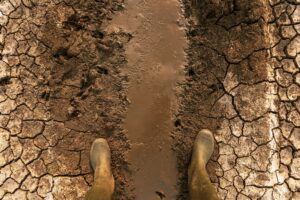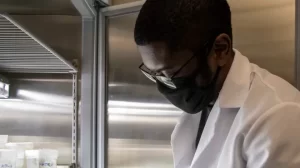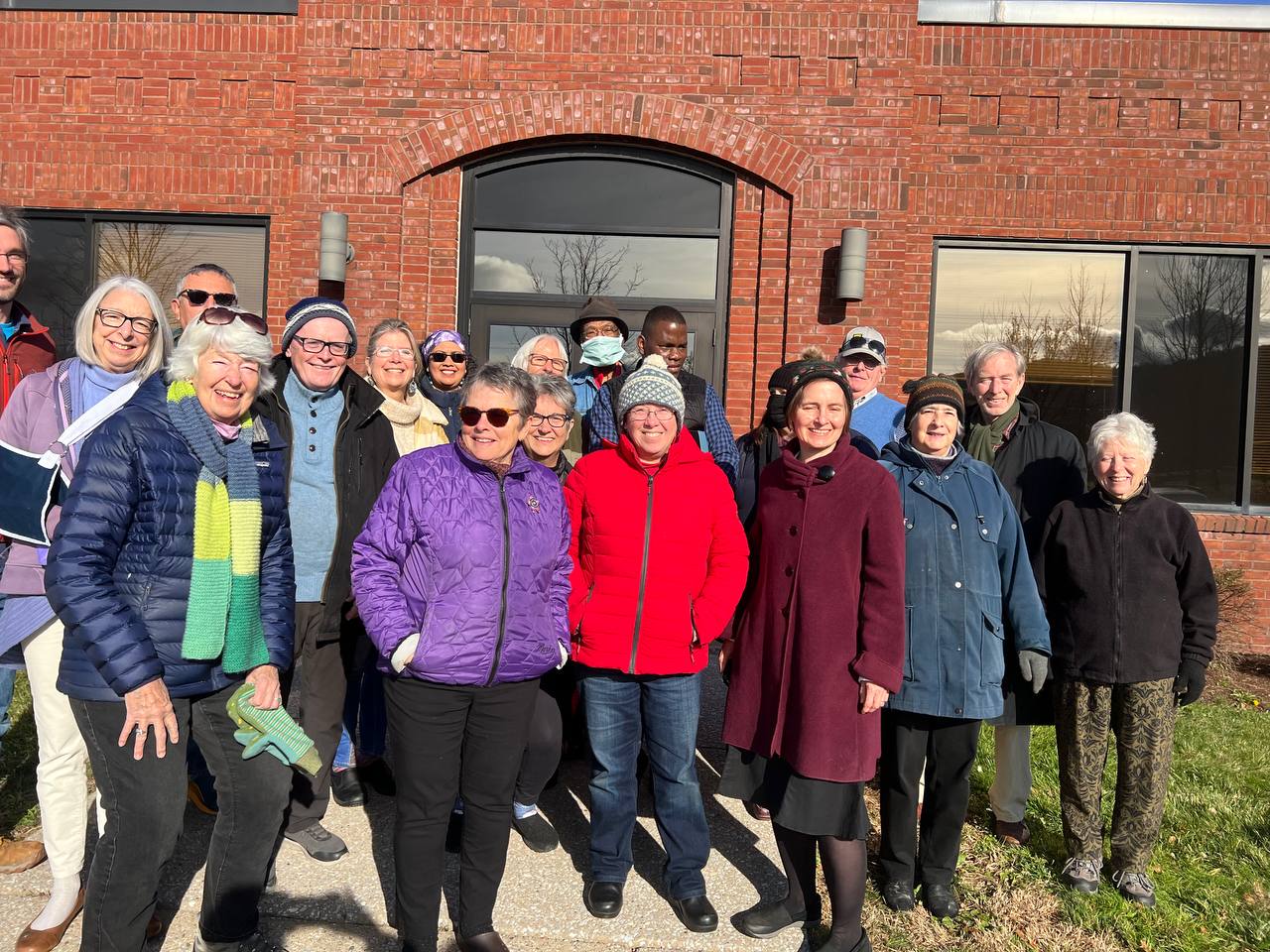On a special episode (first released on May 23, 2024) of The Excerpt podcast: As the world warms and aspirations to reach net-zero carbon emissions slide further and further away, climate scientists and engineers are looking at solutions, that to some, might sound like they’re straight out of science fiction. By taking on climate control with technology, experts say geoengineering can be a tool to help mitigate and remove greenhouse gases from the climate system and may be essential to reducing global temperatures. Wake Smith, author of “Pandora’s Toolbox: The Hopes and Hazards of Climate Intervention,” and a lecturer at the Yale School of the Environment, joins The Excerpt to discuss these developments in climate intervention.
Dana Taylor:
Hello and welcome to The Excerpt. I’m Dana Taylor. Today is Thursday, May 23, 2024 and this is a special episode of The Excerpt.
As the world warms and aspirations to reach net-zero carbon emissions slide further and further away, climate scientists and engineers are looking at solutions that to some might sound like they’re straight out of science fiction. By taking on climate control with technology, experts say geoengineering can be a tool to help mitigate and remove greenhouse gases from the climate system and may be essential to reducing global temperatures. Joining me now to discuss these developments in climate intervention is Wake Smith, author of Pandora’s Toolbox, the Hopes and Hazards of Climate Intervention, and a lecturer at the Yale School of the Environment. Thanks for being on The Excerpt, wake.
Wake Smith:
Happy to be here. Thank you for having me.
Dana Taylor:
You’ve said that cutting emissions isn’t enough to solve climate change. Can you explain what geoengineering is and why is it being considered as an important tool to fight global warming?
Wake Smith:
Firstly, yes, I am an emissions pathway pessimist, that doesn’t mean I’m rooting for that outcome. But if I stare into my crystal ball, hazy though it is, I’m afraid that the incentives to cut emissions don’t seem to be strong enough to compel the world to cut emissions as quickly as we would need to do to avoid climate change. So I think most people have somehow hoped that we would simply avoid climate change. We’re not going to do that. We’re going to get much more climate change than the general public currently imagines that we will. And again, that’s not a good thing, it’s a bad thing, but I’m afraid that’s where I think we are headed. And so if emissions reductions alone could be sufficient to secure the climate future that future generations will desire, then we wouldn’t need to look into Pandora’s toolbox for any other tools. But since I’m afraid we will need to look into the toolbox, let’s take a look.
Get the Daily Briefing newsletter in your inbox.
The day’s top stories, from sports to movies to politics to world events.
Delivery: DailyYour Email
Broadly, there are two kinds of climate interventions that we could discuss. One of them actually removes greenhouse gases from the atmosphere, that is less and less called geoengineering, that’s generally called carbon capture. The other, the standard solar geoengineering would not remove greenhouse gases from the atmosphere, but would deflect out a little bit of the incoming sunlight and thereby cool the earth in that fashion. It’s not the same thing, but it might be better than not cooling the earth.
Dana Taylor:
There are a lot of ideas out there for how to use technology to intervene with the climate. Two that you’ve touted are solar radiation management and carbon dioxide removal. Can you delve into what these are and why you think they’re important?
Wake Smith:
Sure. So carbon dioxide removal is easier, let’s start with that. The problem that we have is that we’re putting greenhouse gases into the atmosphere at a much faster pace than mother nature can remove them from the atmosphere, roughly 50 units in each year, and one unit out. And the difference between 50 in and one out, that’s the total concentration of greenhouse gases in the atmosphere. Think of it as a filling bathtub, 50 units of water coming in, one unit of water going out, greenhouse gases of course. And so the level of water in the bathtub is filling, and that filling bathtub is what’s causing the climate to warm. So one thing we might do is to widen the drain, to help mother nature and in a man-made way, remove greenhouse gases from the atmosphere faster than nature can do it on its own, way faster hopefully.
Lots of people have heard about trees. Trees are not going to do it, they are a fragile bank of carbon because they burn or get cut down by future generations, and they’re a small bank of carbon. They’re nothing on the scale of what we need. So for carbon capture to make a significant difference to the climate system, we would need a huge global program of carbon capture, industrial in variety, big machines sucking in carbon and burying it deep in the ground, which would be very expensive and looks a lot like the big steel machines that got us into this problem in the first place. That’s true. But if we wanted to pull carbon out of the atmosphere at a substantial rate, that’s the only current way that we know how to do it. But we could do that if we were willing to spend the money to do that.
Again, on the other side of the climate intervention toolbox, we could deflect out a little bit of the incoming sunlight. That won’t reduce the amount of greenhouse gases in the atmosphere, but it would cause the earth to warm less quickly, or even in a more extreme version, could cool the earth relative to some future temperature. So if it got too hot, there is a way that we could perhaps cool it down. However, I don’t mean to oversell this technology. It’s a very immature technology, a very controversial technology, and so we shouldn’t put too much faith in it yet. But if we heated the earth too much, there is at least one tool that looks like it would help.
Dana Taylor:
Okay, so I’m going to drill down on that one a little bit. Some people consider the use of geoengineering controversial, because of the scientific unknowns and governance challenges. What are some of the key concerns with those technologies?
Wake Smith:
Those people are right. We wouldn’t do this if we weren’t confronting a big problem. But I’m afraid we will confront a big problem, and so we will therefore consider solutions that seem extreme now. But this is an untested technology. The number of field tests that have been done on stratospheric aerosol injection, the main thing we’re talking about here, the number of field tests stands at zero. We have done no flying in the stratosphere to test this idea. There’s all sorts of natural and lab-based reasons to believe that it would work. But still, we would have to get out there and test it. There’s every possibility that some stuff might happen that we didn’t expect. The risk of unknown consequences should be taken very seriously. So until such time as we do begin to get out and test this technology and better understand what it does and does not do, we shouldn’t place too many eggs in that basket.
It also wouldn’t have same impact everywhere. It might cool some places more efficiently than others, and a climate that is warmed by excessive greenhouse gases and then cooled by solar radiation management will not necessarily be the same climate as the climate we had before. There is a significant risk of unknown unknowns, and we need to get out and do some flying in the atmosphere before we can have confidence as to exactly how this would work. As well, a climate warmed by excessive greenhouse gas emissions and then cooled via solar radiation management would not necessarily be the same climate in every locality that used to exist before climate change. So there are lots of risks that need to be addressed, and those are simply the physical risks. There are indeed a whole governance conundrum about how we would choose the global temperature setting and who would decide. Those two sound like utterly insoluble problems, except if people are beginning to die due to climate change in large numbers, suddenly we might decide this was a much more serious challenge than we’re currently taking it as today.
Dana Taylor:
Like you said, some places might be cooled more than others. What variables and regional considerations need to be taken into account when undertaking geoengineering?
Wake Smith:
The short answer is, we won’t know until we do some testing. We just don’t know. But it won’t be a big magic undo climate button, for climate change. It won’t be that. And so even if we reduced or held steady global average surface temperatures, once again, precipitation patterns may change and precipitation patterns, where it rains and agriculture thrives, and where it’s dry and agriculture doesn’t, those are hugely impactful on human civilization. So even if we had a broad temperature thermostat that we could fiddle with, that wouldn’t mean that the climate status quo ante would necessarily be restored everywhere.
Dana Taylor:
What role does government play versus big business and science in researching and implementing these kinds of things?
Wake Smith:
Science needs to lead the way in terms of figuring out how this technology could work and what would be better and worse ways of implementing it. Private industry will probably be the parties that would actually implement it, would own the airplanes that would do the flying, would pay the pilots that would do the flying, pay the monitoring infrastructure that would be needed to ensure we understood what this was doing. But the ultimate source of payments, the only source of payments are big governments, probably governments in collaboration with each other. There’s no reasonable private market by which people would expect to undertake this sort of solar geoengineering. There are little for-profit ventures that are happening now, but there are something on the order of one trillionth the size of what you would need in order to have substantial climate impact. The only parties that are going to pay for that sort of sized program are the world’s major governments. So I don’t think that people need to be fearful that private industry will somehow run away with this. No one would pay them to do that.
Dana Taylor:
You’ve referred to the use of geoengineering as the ‘Breaking the glass in an emergency option.’ Why do you say that and why is it potentially a last but important resort?
Wake Smith:
Well, I’m afraid it won’t be the last. There will be others beyond it. But it is an option that could cool the planet relatively quickly. Now, that’s only true if we manufacture a fire extinguisher and put it in the cabinet. So it would take 10 or 20 years to put the infrastructure in place to do a major solar geoengineering intervention. But if we made that prior investment and had the technology ready, then this could cool the planet dramatically in the span of a year or so.
That may not be a good idea. We would likely want to ramp it up only gradually. But the point is, this could dramatically cool the earth quickly, which reducing emissions cannot do, that could stop it from getting warmer, but it won’t cool the Earth, not on a human time scale. It will take centuries after we reach net zero for the earth to cool down again. Carbon capture won’t happen quickly. That too is probably a centuries-long process. But solar geoengineering, that could impact the planet quickly. And so it is the only intervention in this theoretical toolbox that could ameliorate temperatures if somehow we hit a tipping element, we passed a tipping point, climate change is running out of control. This is a tool that could help, theoretically, still need to test it.
Dana Taylor:
And finally, if you had one nugget that you want listeners to walk away with, what would that be?
Wake Smith:
I’m afraid the climate problem is worse than you think it is. And it’s not going to… We are not going to avoid climate change. On the other hand, it is not going to be the end of civilization. Humanity is super-adaptable. It will have to be. And so we will find ways to contend with this problem in the future, but not by avoiding the problem. The climate will be different, materially different at the end of this century than it is today. And the sooner we take that seriously, the better.
Author:: Bagombeka Job
CREDIT:: USA TODAY














































